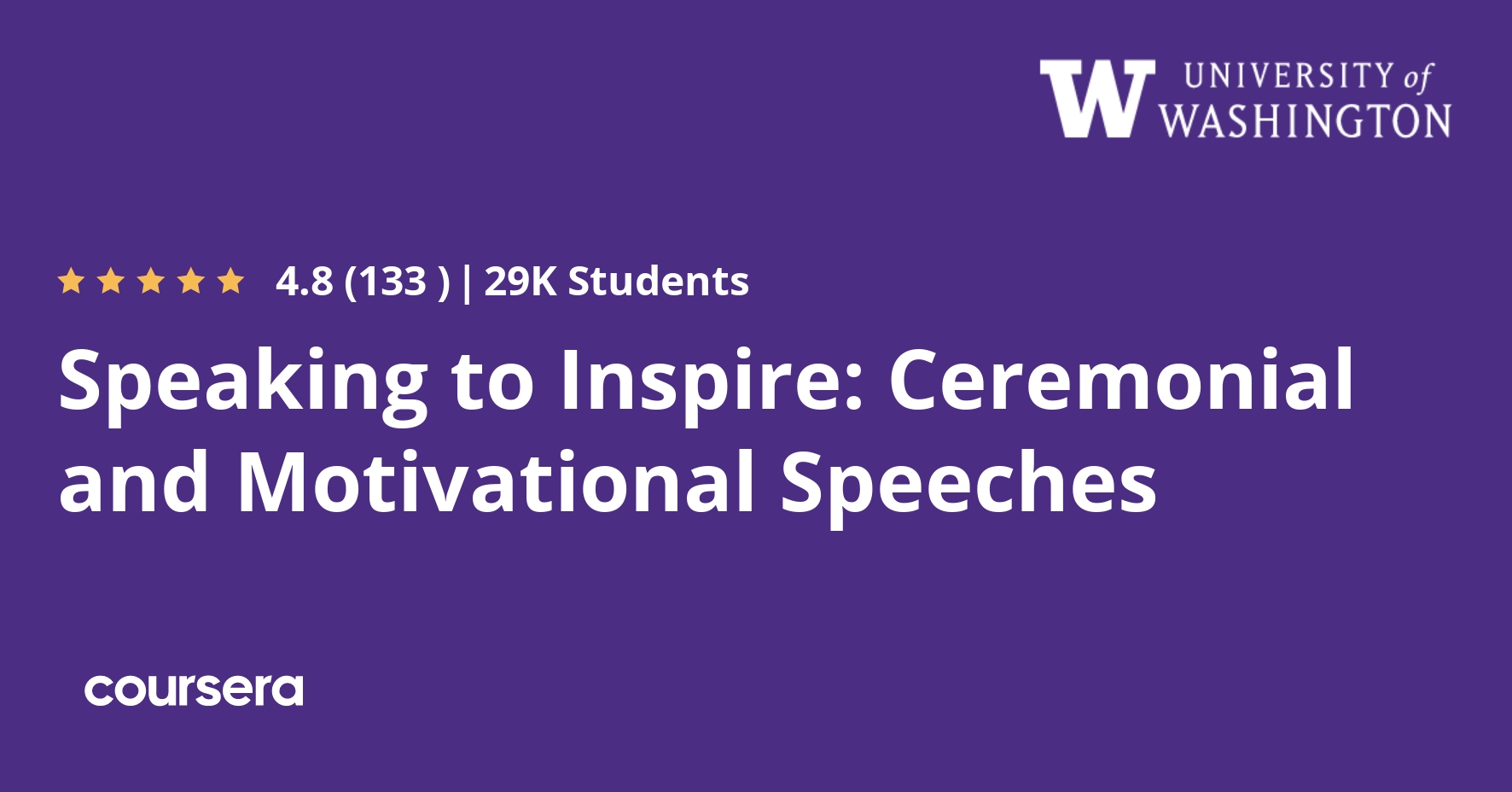Description
The most memorable speeches inspire, entertain, and praise. By blending stories and eloquence, great speeches highlight the core values motivating an audience. You might need to do this in a keynote address, a eulogy, or simply a business meeting. Inspiring audiences is a common, but difficult writing challenge. You want a speech that elevates the topic and the audience.
This course gives you a method for preparing and delivering speeches that inspire and entertain. By the end of this course, you should be able to compose and deliver moving speeches that praise core audience values through evidence, storytelling, and humor. You should be able to write eloquent passages in tones appropriate to the audience and occasion and speak fluidly from either a well-prepared manuscript or from memory. Learners will record speeches, providing and receiving peer feedback.
What you will learn
Week 1. Using values and storytelling to develop a great speech
Welcome! We begin this week with an overview of the course: What it is and what we’ll be doing. From there we can start preparing our speeches. We’ll start by finding the core values that will drive the speech. Values that speak to the topic and inspire your audience. We’ll then explore how to discuss those values through evidence and storytelling. By the end of the week, you’ll have a list of values and stories to write a speech. With a sense for the topic, we can then get to know each other with an introductory speech. It’s a fun and easy speech that allows you to get to know some of your classmates.
Week 2. Arrangement. Finding the right form for your speech.
Last week, we worked on developing the pieces of our speech (values and support). This week, we’ll take those pieces and build a speech outline. There are a few broad arrangement models that prove helpful in organizing the speech in a compelling and moving way. We’ll look to some of the very specific concerns that emerge when dealing with speeches of introduction, eulogies, and award speeches. Having discussed invention and arrangement, we’ll watch and evaluate a sample speech. You’ll watch a speech, write up some feedback, and read how others analyzed the speech.
Week 3. Getting it just right. Good language, tone, and writing for the delivery
You have your outline, so now let transform that into a manuscript. This week is all about style. We’ll start by thinking about what overall style is most appropriate for your speech. Then we’ll move through a bunch of stylistic devices. These are equations for eloquence. You put your value into these stylistic devices and eloquence pops out the other side. From there, we can talk more about word choice and overall tone. Once we have the basic structure down, we can look to openers and closers, basically figuring out how to get into and out of the speech. Finally, we’ll talk a little bit about writing for the ear and drafting a speech manuscript (which is different from an essay). The optional assignment this week is a draft manuscript. This is just a chance to get some feedback from others on an early draft.
Week 4. Remembering and delivering a great speech.
You have your manuscript, now let’s perform it. Memory and delivery are clearly linked. We need to decide whether we’ll extemporize the speech, work from a manuscript, or memorize the whole thing. No one approach is inherently better, but should be a good response to the rhetorical situation. We’ll talk about making this decision. Now we can finally get into some humor work. Some of this is certainly invention, but a lot of it is delivery. We’ll think about where and how to insert some humor into our speeches. And just as important, what to do when a joke falls flat. We’ll wrap up with some general delivery and performance issues. The assignment this week is a speech analysis. You’ll watch a speech, write up some feedback, and read how others analyzed the speech.








